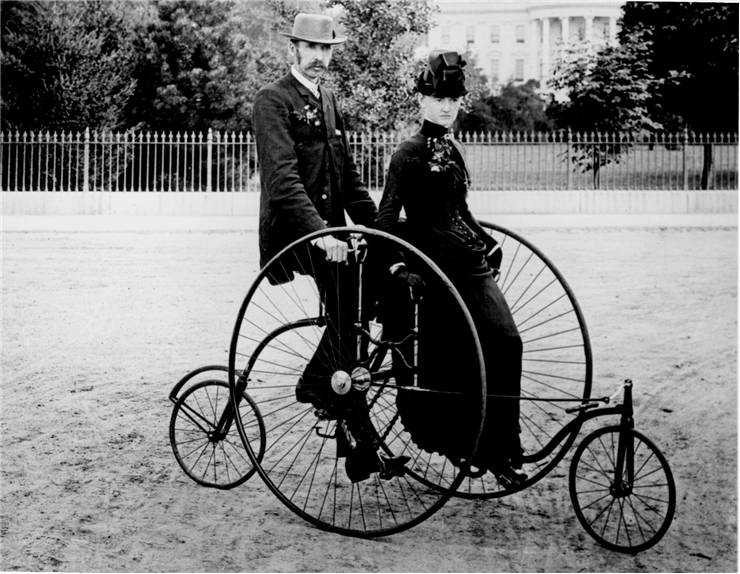History of Quadracycles - Facts and Types
As many other more exoteric sub-types of bicycle, the history of quadracycle began with the organized manufacture of first bicycles in the middle of 19th century. After they were first introduced, quadracycles became popular for many uses, at first mostly for recreation and easier transfer of people and goods between city locations. The defining characteristics that separate quadracycles from carriages or cars are that they have to be light (made from wood or light metals), have four wheels, place for at least one passenger, and have to be powered by human power either utilizing levers or pedals that can be operated by hands of feet. First recorded design of quadracycle appeared on the 1853 Exhibition of the Industry of All Nations World's Fair in New Youk City. This initial design was improved in the following years, most notably with the Coventry Rotary Quadracycle in 1885 (which was at first look just a doubled penny-farthing) and Rudge Quadracycle in 1888 that was hailed as first practical and easy to use quadracycle on the worldwide market. Another very popular quadracycle model was made in France in 1924. Velocar pedal design featured 2 seats and later supported 3 gears, and was used even throughout World War II when gasoline was hard to find in France and rest of Europe.
Because of the proliferation of cars and much greater popularity of bicycles, even shortly after they were introduces quadracycles became used only for specific purposes of short range travels on good terrain. Those use cases scenarios eventually forced manufacturers of quadracycles to build them as separate families of those vehicles, which can be separated in six categories:
- Tourist quadracycles – Lightweight rental quadracycles, supporting usually between two and four seats. These quadracycles are made for easy use in very well maintained roads.
- Taxi quadracycles – Quadracycles used for taxi services in several cities, today rarely seen in use. They had up to 6 seating positions.
- Touring quadracycles – Quadracycles made for longer trips, sometimes with chain mechanisms that support up to 192 gears, enabling them to travel even up to steep hills.
- Mountain quadracycles – Rugged quadracycles made to resemble mountain bikes, with strengthened wheels and body structure that can survive rough terrain and falls.
- Industrial quadracycles – Made for transport of people or goods either inside industrial areas or for delivering goods to local stores of homes. They can be either light or reinforced and heavy.
- Racing quadracycles – Built for speed and competitive racing.
